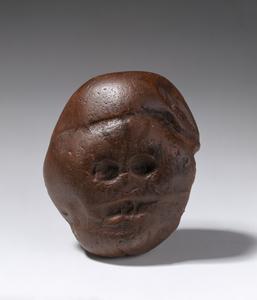Recently, a curious posting by NYTimes columnist and writer Rob Walker appeared on his blog (www.murketing.com), a story of the Makapansgat Pebble. This anthropomorphic stone was found in what is now South Africa, and is estimated to be about 3 million years old, writes Walker. It was certainly not made by a human ancestor – in those early times they could not make anything yet. “What’s significant about it is that the experts believe, based on the makeup of the pebble, that the spot where they found it, among ancient bones and whatnot, indicate that some hominid carried the thing several miles.”
“Why was it carried away from its place of origin? Well, obviously we don’t know the precise answer, but clearly it’s not a matter of use-value: The pebble is not functional, it’s not a tool. Whatever motivated the owner of this object, he (or she) certainly didn’t need it. And that is the message of the Makapansgat Pebble: In the history of material culture, it represents the birth of want”, concludes Rob Walker.
Aside from a fascinating insight into history of this little-known artifact, Rob’s posting is worth reflecting on from our designers’ point of view. Throughout the 20th Century, the spread and marketing of “want” was always justified by “need”. A purely symbolic, decorative object (think Philip Stark’s famous lemon juicer) had to be able to perform a function, however compromised, in order to be considered a “legitimate” design product. Most design writers and educators still insist that new products must be based on a new need. Yet the pebble story seems to imply that in the earliest periods of history the want had actually preceded tool-making and other essential functions, which ultimately made humans human. The first souvenir came well before the first tool.
Today, the old idea of function needs to be re-considered and expanded. Things like souvenirs, collectibles, flowers, or toys enlarge human experience and form an important part of our material culture, even though they do not seem to fit a standard definition of usefulness. Products based on want without need are abound on the market, yet one can’t sell anything founded on need without want.

Wow! I stumbled across your piece while researching Gullivers Travels for a piece of art I am doing, and through the flying fortress of Laputa on Google images, came across your site. I had never heard of the Makapansgat Pebble, but have since spent two hours on a snowy Sunday morning reading and discovering some amazing stuff about hominids and human evolution. So ... thanks!
ReplyDeleteLorain, Leeds, UK